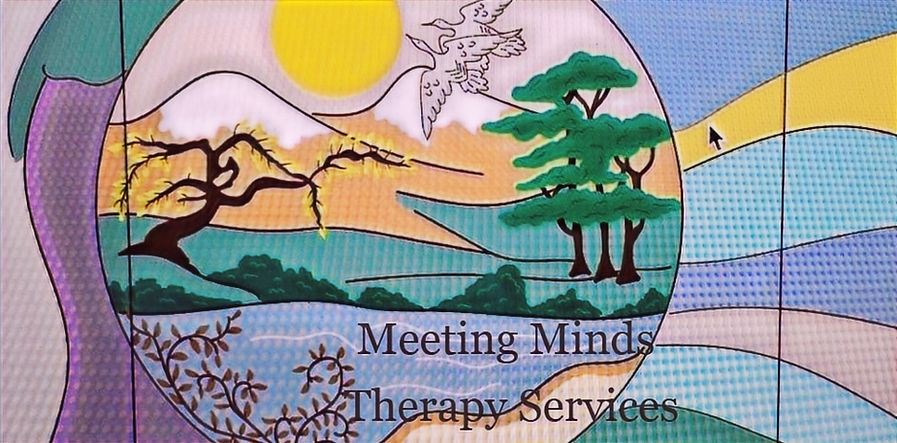Embracing Healing: The Mental and Physical Benefits of Letting Go
- Lyn Reed
- Sep 7
- 4 min read

Holding onto emotional pain affects both our mental and physical well-being.
Letting go is not just about moving forward; it's about rediscovering ourselves and seeking healing.
This blog post will delve into how releasing emotional pain can enhance our mental health, impact our physical well-being, and help us reconnect with ourselves.
Understanding Emotional Pain
Emotional pain is a natural response to various life events, including loss, trauma, or distressful situations. This pain can arise from relationships, the death of a loved one, or unresolved childhood issues.
Studies show that nearly 70% of people experience emotional pain that can linger and affect their daily lives.
When we hold onto this emotional burden, it can lead to anxiety, depression, and diminished self-esteem. Understanding its roots is a critical step in healing.
Acknowledging these feelings allows us to process them instead of suppressing them, which can lead to more serious complications.
The Mental Health Benefits of Letting Go
Releasing emotional pain offers significant mental health benefits. When we let go, we make room for positive emotions and experiences. Below are some key advantages:
1. Improved Mood
Letting go can significantly uplift our mood. Research indicates that individuals who actively work on releasing emotional pain report a 30% increase in feelings of joy and happiness. This shift helps us engage more with others and appreciate everyday moments.
2. Reduced Anxiety and Stress
Carrying emotional pain often contributes to heightened levels of anxiety and stress.
By consciously releasing these burdens, many experience a roughly 40% reduction in anxiety symptoms. This newfound calmness allows us to approach challenges with clarity and composure.
3. Enhanced Self-Esteem
Releasing emotional pain often revitalises our sense of self-worth. Individuals who release negative beliefs about themselves see a boost in self-esteem and confidence.
This transformation empowers us to pursue dreams without the weight of past pain holding us back.
4. Greater Resilience
Letting go fosters resilience. As we learn to navigate our emotions, we become better equipped to face future challenges.
Research suggests that resilient individuals are less likely to experience mental health issues in times of stress.
The Physical Impact of Emotional Pain
The connection between emotional pain and physical health is well-documented. Emotional distress can trigger various bodily reactions. Here are some of the physical effects of holding onto emotional pain:
1. Chronic Pain
Chronic physical conditions, such as headaches, lower back pain, and muscle tension. can result from emotional pain.
A study found that 60% of people with chronic pain also report significant emotional distress, highlighting the link between the two.
2. Weakened Immune System
Chronic emotional pain can weaken our immune system, making us more vulnerable to illness. Stress hormones released during emotional distress can reduce the body’s effectiveness against infections and diseases.
3. Sleep Disturbances
Emotional pain can disrupt sleep, leading to insomnia or restless nights.
According to the National Sleep Foundation, 50-70 million adults in the U.S. experience some form of sleep disorder, often linked to emotional distress.
Poor sleep can further worsen mental health issues, creating a cycle that is hard to escape.
4. Digestive Issues
The gut-brain connection is strong. Emotional pain is often linked to digestive problems, like irritable bowel syndrome (IBS). Stress and anxiety can disrupt our appetite and digestion, resulting in discomfort or pain.
Reconnecting with Ourselves
Reconnecting with ourselves is vital for healing. Letting go of emotional pain gives us a chance to rediscover our identity beyond our struggles. Here are some effective ways to help facilitate this reconnection:
1. Mindfulness and Meditation
Practising mindfulness and meditation helps us become aware of our thoughts and feelings.
These techniques encourage present-mindedness, enabling us to process emotions without judgment. This process leads to a deeper understanding of our true selves.
2. Journaling
Journaling can be a powerful healing tool. Writing about our experiences allows us to express thoughts and feelings, providing clarity and insight.
A study found that individuals who journal regularly report feeling 25% more in control of their emotions and thoughts.
3. Seeking Support
Connecting with others who understand our struggles can greatly impact our healing.
Whether through therapy, support groups, or trusted friends, sharing our experiences helps us feel less isolated.
Research shows that supportive relationships can provide essential encouragement as we navigate healing.
4. Engaging in Creative Outlets
Creative expression serves as a therapeutic pathway to reconnect with oneself.
Whether through painting, music, or creative writing, engaging in these activities allows us to channel emotions into something meaningful.
This process can be both cathartic and empowering.
Embracing the Healing Journey
Letting go of emotional pain is a brave step toward healing. The mental and physical benefits of releasing this pain are tangible, fostering improved mood, reduced anxiety, and enhanced well-being.
By reconnecting through mindfulness, journaling, and creative activities, we can embrace a healthier, more fulfilling life.
As we travel this healing path, it is crucial to recognise it as a continuous process. Each step toward releasing emotional pain brings us closer to a brighter, more authentic self.
Embrace your healing journey today and take the first step towards a brighter, more authentic self.
